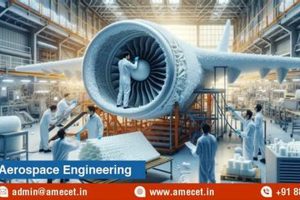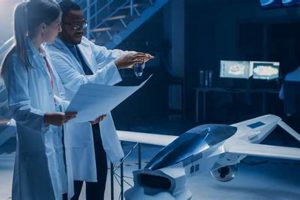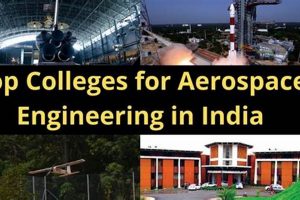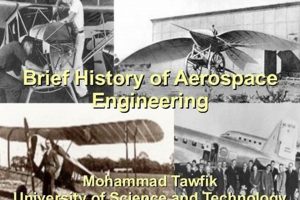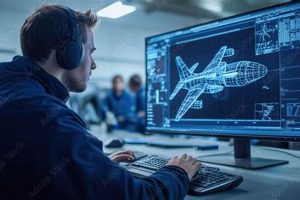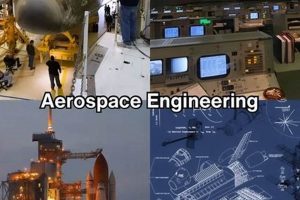A direct comparison of the roles reveals fundamental differences in function and focus. One profession centers on the practical operation of aircraft, demanding mastery of flight controls, navigation, and safety protocols. The other concerns the design, development, and testing of aircraft and related systems, requiring a deep understanding of engineering principles and scientific concepts. A professional trained to fly aircraft differs significantly from one trained to create them.
The contrasting responsibilities highlight the necessity of both professions for a thriving aviation industry. The safe and efficient transportation of people and goods relies on skilled operators. Advancements in aviation technology, leading to improved performance, safety, and efficiency, are driven by professionals engaged in research, design, and development. Historical context reveals that each role has evolved significantly alongside advancements in technology and societal needs.
The following sections will explore the specific skills, education, career paths, and challenges associated with each of these vital roles within the field of aviation, providing a detailed overview of their respective contributions and requirements.
Guidance for Aspiring Professionals
The following points offer direction for individuals considering a career trajectory within either operational aviation or aerospace engineering. Careful consideration of these aspects is recommended for informed decision-making.
Tip 1: Research Core Competencies: Thoroughly investigate the required skills. For operational aviation, emphasize spatial reasoning, quick decision-making, and communication. Aerospace engineering necessitates strong analytical abilities, mathematical proficiency, and problem-solving capabilities.
Tip 2: Evaluate Educational Pathways: Examine the appropriate academic qualifications. A pilot typically requires flight training certifications, which may or may not include a four-year degree. Aerospace engineers usually need a bachelors degree in engineering or a related scientific field, and advanced roles may require a master’s or doctoral degree.
Tip 3: Understand Job Market Realities: Analyze current employment trends and future projections. The demand for trained flight personnel and qualified engineers varies depending on economic conditions and technological advancements within the aviation sector.
Tip 4: Consider Personal Aptitudes: Assess inherent strengths and weaknesses. Individuals with a passion for hands-on operation and a desire for travel might find operational aviation more appealing. Those who enjoy problem-solving, design, and technological innovation may be better suited to aerospace engineering.
Tip 5: Gain Practical Experience: Seek out relevant opportunities to acquire real-world skills. Aspiring pilots should pursue flight lessons and accumulate flight hours. Prospective aerospace engineers should seek internships or research opportunities within the industry.
Tip 6: Network with Professionals: Connect with individuals working in the field. Attending industry events, joining professional organizations, and engaging in informational interviews can provide valuable insights and potential career connections.
Tip 7: Prioritize Continuous Learning: Acknowledge the importance of ongoing professional development. Both operational aviation and aerospace engineering require continuous adaptation to evolving technologies and regulations.
These suggestions are intended to guide prospective aviation professionals through the initial stages of career planning, emphasizing the need for careful research, self-assessment, and strategic preparation. Understanding the distinct demands and rewards associated with each path is crucial for making an informed career choice.
The subsequent section will delve into a detailed comparison of the daily responsibilities and long-term career prospects within operational aviation versus aerospace engineering, offering further clarification for potential career seekers.
1. Operational Focus
Operational focus, in the context of distinguishing between a pilot and an aerospace engineer, represents a core divergence in their respective professional activities. A pilot’s primary responsibility lies in the direct operation of an aircraft. This encompasses pre-flight inspections, navigation, in-flight management, and safe landing procedures. The pilot is directly responsible for the immediate safety and control of the aircraft, its passengers, and cargo. This operational imperative dictates that the pilot’s training and expertise center on applied skills and real-time decision-making within a dynamic environment.
Aerospace engineers, conversely, primarily focus on design, development, research, and analysis related to aircraft and spacecraft. Their work is typically conducted in office, laboratory, or manufacturing settings. While they require an understanding of operational principles to inform their designs, they are not directly involved in piloting aircraft. Their focus is anticipatory and preventative, aiming to engineer systems that minimize operational risks and maximize efficiency. For example, an aerospace engineer might design an improved flight control system that a pilot would then utilize operationally. The operational focus thus informs the engineers design constraints and performance targets.
The distinction in operational focus highlights the specialized nature of each profession. Pilots require extensive flight training and certification, while aerospace engineers necessitate a strong foundation in mathematics, physics, and engineering principles. While there is some overlap in knowledge for example, both must understand aerodynamics their primary responsibilities and training pathways are fundamentally different. Understanding this difference is critical for aspiring aviation professionals in determining which career path aligns best with their skills and interests.
2. Design Influence
Design influence underscores a critical distinction between the roles. An aerospace engineers work directly shapes the aircraft and its systems, whereas a pilots role involves operating a pre-designed aircraft. Understanding this influence provides insight into the varying responsibilities and required skill sets within the aviation industry.
- Aerodynamic Configuration Impact
An aerospace engineer’s design decisions regarding wing shape, fuselage profile, and control surface placement directly impact an aircraft’s performance and handling characteristics. A wing designed for high-speed efficiency might reduce maneuverability, affecting a pilots operational tactics. Conversely, a design prioritizing maneuverability may compromise fuel efficiency. This interplay illustrates how engineering choices dictate the pilots operational envelope.
- Avionics and Human-Machine Interface Design
Aerospace engineers design the avionics systems that pilots use to navigate, communicate, and control the aircraft. The design of the cockpit layout, instrument displays, and flight management systems significantly influences a pilot’s situational awareness and workload. Poorly designed interfaces can increase pilot error rates, highlighting the critical importance of human factors engineering in avionics design.
- Safety System Integration
Engineers are responsible for integrating safety systems, such as automatic flight control systems, emergency oxygen systems, and ejection mechanisms. The effectiveness of these systems directly affects the pilot’s ability to respond to emergencies. A well-designed system can mitigate the consequences of pilot error or system failures, potentially saving lives. The design and integration process necessitates considering a wide range of potential operational scenarios.
- Structural Integrity and Material Selection
An aerospace engineers choice of materials and structural design profoundly impacts the aircraft’s durability and resistance to stress. Design decisions regarding the airframe’s ability to withstand G-forces, turbulence, and other operational stresses directly influence the pilot’s confidence and safety margins. The engineer’s choices establish the parameters within which the pilot must operate.
These considerations emphasize that design influence is not merely an abstract concept but a tangible force shaping the entire aviation experience. The pilot operates within the parameters established by the engineers design choices, highlighting the need for effective communication and collaboration between the two professions to ensure safe and efficient flight operations.
3. Skill divergence
Skill divergence is a defining characteristic when differentiating the roles of pilot and aerospace engineer. The skill sets required for each profession, while both contributing to aviation, are distinct and non-interchangeable. This divergence stems from the fundamentally different tasks each profession undertakes: one focusing on the operational control of aircraft, the other on its design and development. A pilot’s primary skills involve practical, real-time decision-making, spatial reasoning, and mastery of aircraft control systems. Aerospace engineers, on the other hand, require advanced analytical abilities, mathematical proficiency, and a deep understanding of engineering principles.
This distinction is not merely theoretical; it manifests in the training pathways and professional responsibilities of each role. Pilot training emphasizes hands-on experience, flight simulation, and the ability to react effectively in dynamic, unpredictable situations. Aerospace engineering education, conversely, focuses on theoretical knowledge, computer-aided design, and rigorous analysis. A pilot might be adept at handling an emergency landing in adverse weather conditions, a skill directly linked to operational experience. An aerospace engineer might excel at optimizing an aircraft’s aerodynamic profile to improve fuel efficiency, a task requiring specialized technical knowledge. The skills needed to excel in each field have little overlap, underscoring the skill divergence.
Understanding skill divergence is crucial for aspiring aviation professionals. It allows for informed career choices based on individual aptitudes and interests. Recognizing that successful piloting demands a different skillset than successful aerospace engineering prevents misallocation of resources and ensures that individuals pursue careers aligned with their strengths. Furthermore, acknowledging the importance of each profession’s specialized skills fosters mutual respect and collaboration within the aviation industry, leading to improved safety, efficiency, and innovation. While both roles contribute to flight, their skillsets are drastically different.
4. Education variance
Educational variance serves as a primary delineator between the professions. A career as a pilot typically necessitates specialized flight training culminating in certification from regulatory bodies, such as the FAA in the United States or EASA in Europe. While a four-year university degree is increasingly valued, it is not always a mandatory prerequisite for initial entry into commercial aviation. Flight schools offer comprehensive training programs designed to equip individuals with the practical skills and knowledge required to operate aircraft safely. The emphasis is on hands-on experience, simulated flight scenarios, and adherence to strict regulatory standards. Conversely, an aerospace engineering career demands a strong academic foundation in mathematics, physics, and engineering principles, generally fulfilled through a bachelor’s degree in aerospace engineering or a related field. Advanced roles, particularly those in research and development, often require a master’s or doctoral degree. Engineering curricula emphasize theoretical understanding, analytical problem-solving, and the application of scientific principles to aircraft and spacecraft design.
The practical implications of this educational variance are significant. Pilots trained through certification programs acquire expertise in aircraft operation, navigation, and emergency procedures. They are well-versed in aviation regulations and the practical aspects of flight management. However, their understanding of the underlying engineering principles governing aircraft design and performance may be less comprehensive. Aerospace engineers, on the other hand, possess a deep understanding of these principles, enabling them to design and analyze aircraft systems. They are equipped to address complex engineering challenges and contribute to technological advancements in aviation. However, they typically lack the hands-on operational experience of pilots. For instance, a pilot facing an unexpected aerodynamic phenomenon in flight relies on established procedures and learned responses, while an aerospace engineer might be tasked with analyzing the phenomenon and developing design modifications to prevent its recurrence.
In summary, the educational variance between pilots and aerospace engineers reflects the distinct demands and responsibilities of each profession. Pilot training emphasizes operational proficiency, while aerospace engineering education prioritizes theoretical knowledge and analytical skills. Recognizing this variance is crucial for individuals considering a career in aviation, allowing them to make informed decisions based on their aptitudes and interests. Furthermore, it underscores the complementary nature of these two professions, highlighting the need for effective communication and collaboration to ensure safe and efficient air travel. The varying educational paths taken directly result in differing expertise and career paths, both crucial to aviation.
5. Risk profiles
The divergence in risk profiles constitutes a significant factor when comparing the roles. A pilot’s profession inherently involves managing real-time, dynamic risks associated with flight operations. These risks can stem from various sources, including weather conditions, mechanical failures, air traffic congestion, and human error. Mitigation strategies involve adherence to established protocols, proficient aircraft handling skills, and sound judgment under pressure. The consequences of failing to manage these risks can range from minor incidents to catastrophic accidents, underscoring the critical importance of risk assessment and mitigation in pilot training and operations. For example, a pilot encountering unexpected turbulence must react swiftly and decisively to maintain control of the aircraft and ensure the safety of passengers. This requires both technical skill and the ability to remain calm and focused in a stressful situation.
In contrast, an aerospace engineer’s risk profile is primarily associated with the design, development, and testing phases of aircraft and related systems. While the immediate physical danger may be lower, the long-term consequences of design flaws or engineering errors can be substantial. Risks in this domain include structural failures, system malfunctions, and performance deficiencies that can compromise the safety and efficiency of aircraft. Mitigation strategies involve rigorous testing, meticulous analysis, and adherence to stringent safety standards. For example, the failure to properly account for metal fatigue in an aircraft’s wing structure could lead to catastrophic failure after years of operation. The risks associated with engineering oversights typically manifest over a longer timeframe than those encountered by pilots, but the potential impact can be equally devastating.
In summation, the risk profiles associated with the roles differ significantly in nature, scope, and timeframe. Pilots face immediate, operational risks requiring real-time decision-making and skillful execution. Aerospace engineers confront design-related risks with long-term implications, demanding meticulous analysis and rigorous testing. Understanding these risk profile differences is essential for individuals considering careers in aviation and for fostering effective collaboration between pilots and engineers to enhance the safety and reliability of air travel. The divergent types of risks each professional faces necessitates distinct training and mitigation strategies.
Frequently Asked Questions
This section addresses common inquiries concerning the distinctions between the roles, providing clarity on their respective responsibilities and requirements within the aviation sector.
Question 1: What are the fundamental differences in the daily tasks performed?
A pilot engages in pre-flight checks, aircraft operation, navigation, and communication with air traffic control. An aerospace engineer works on aircraft design, testing, and research, typically in office or laboratory settings.
Question 2: Is a university degree mandatory to become a pilot?
While not always mandatory for initial entry into commercial aviation, a four-year university degree is increasingly preferred by airlines. Completion of a certified flight training program is, however, essential.
Question 3: What academic qualifications are necessary to become an aerospace engineer?
A bachelor’s degree in aerospace engineering or a closely related field is generally required. Advanced positions often necessitate a master’s or doctoral degree.
Question 4: What are the key skills required for success in each profession?
Pilots require excellent spatial reasoning, decision-making abilities, and manual dexterity. Aerospace engineers need strong analytical skills, mathematical proficiency, and a deep understanding of engineering principles.
Question 5: How do the risk profiles differ between a pilot and an aerospace engineer?
Pilots manage real-time operational risks associated with flight. Aerospace engineers address design-related risks that can manifest over the long term, often involving structural integrity or system performance.
Question 6: Is it possible to transition from one profession to the other?
While not impossible, a transition typically requires significant retraining and re-education. A pilot pursuing engineering would need to acquire a relevant engineering degree, and an engineer seeking to become a pilot would need to complete flight training and obtain the necessary certifications.
In summary, understanding the distinct qualifications, skills, and responsibilities associated with each profession is crucial for making informed career decisions within the aviation field.
The subsequent section will explore the typical career progression and salary expectations associated with the roles, offering further guidance for aspiring aviation professionals.
Pilot vs Aerospace Engineer
The preceding analysis has elucidated the fundamental distinctions between the roles. The roles occupy separate but equally critical spheres within the aviation ecosystem. One concerns the practical application of flight principles, the other focuses on the theoretical underpinnings and technological advancements that make flight possible. The exploration has highlighted differences in required skill sets, educational pathways, risk profiles, and daily responsibilities. The pilot and the aerospace engineer approach flight from vastly different perspectives, each contributing to the overall safety, efficiency, and innovation within the industry.
The delineation between underscores the specialized nature of aviation careers. Individuals considering entry into the field should carefully assess their aptitudes, interests, and long-term goals. The continued success of the aviation industry relies on the competence and collaboration of both roles and the professionals that fill them. The aviation’s future will require each profession to collaborate in an effective way.


